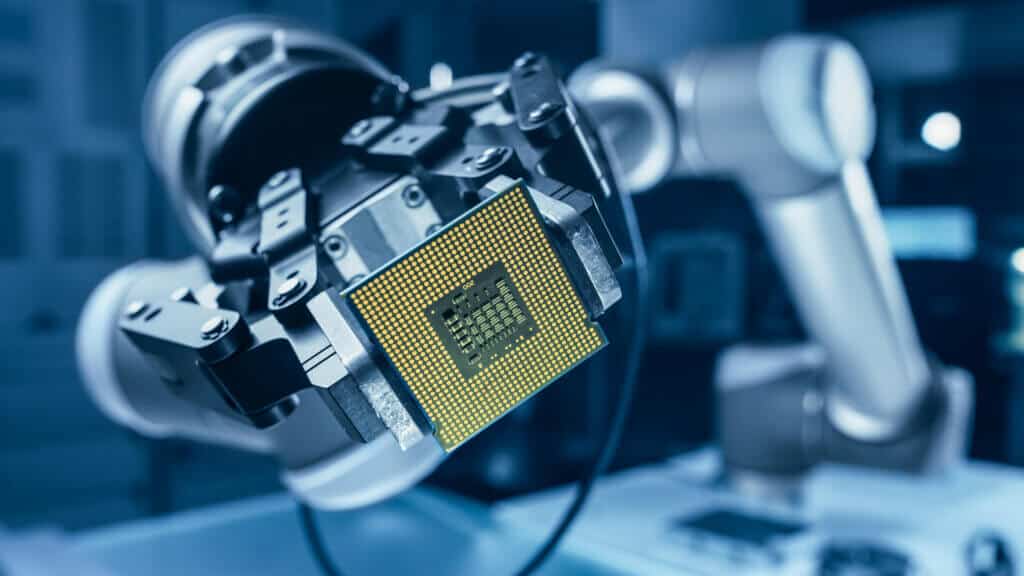
My last blog post about artificial intelligence (AI) covered some of the technology’s history, including how engineers, scientists, writers and readers all understood the rise of AI would change everything. Decades later, it has, though not as some of those early pioneers predicted. AI is now used to process data, recognize patterns, predict outcomes, and make appropriate course corrections. In business, AI’s strengths are especially well suited to the complex area of supply chain. Here, each “link” in the chain involves hundreds, thousands, or even millions of variables that can change in real-time. These links include predicting demand, choosing suppliers, placing and monitoring orders, keeping track of inventory, transporting goods quickly, updating customers about arrival estimates, submitting and maintaining compliance documents when crossing borders, plus many other steps.
Given the many areas of the supply chain where AI can deliver value, it’s no surprise that more and more vendors are popping up, claiming to offer the next most promising iteration of the technology. When it comes to AI, we’re living in the Wild West, and business leaders should be cautious about the claims vendors are making.
Unpacking the Term “AI”
It is especially important for decision-makers to understand what vendors mean when they claim to offer AI. This can be a challenge because vendors use the term “AI” liberally and may be referring to different things. In general, though, the term AI is often used when referring to three distinct technologies:
- Automation
- Operations Research
- True AI
Automation is just like it sounds: the technology is not focused on answering questions or solving problems. Rather, it simply executes certain tasks automatically. Examples include automatically sending an alert if inventory falls below a certain level or cross-checking spreadsheets to ensure data is consistent. Automation is process-driven and is a relatively simple yet integral part of running today’s supply chains.
The next technology that vendors call AI, operations research, is less simple by comparison. It is math-driven and features algorithms that work to answer real questions using one of several methods depending on how quick and optimal the answer needs to be. In operations research, the algorithm itself does not change unless human planners alter it. An example of operations research is the fast, heuristic analysis that enables companies to quickly understand whether they can fill a large new order based on the constraints of time and current supply and demand.
The third thing vendors may be referring to is true AI. I call it “true” because, unlike automation and operations research, true AI not only executes routine actions and solves complex problems, but the algorithm can “learn” from its experience and actually changes itself to yield better outcomes in the future. This capability to learn from data is what sets true AI apart from the other technologies that vendors may refer to as AI. True AI is driven not by process or math but by data.
The Subtleties of True AI
Even within the category of true AI, there are important differences. Some vendors are marketing a generic form of artificial intelligence that sifts through large storehouses of mostly historical data looking for nuggets of insight that could be used to improve supply chain performance. In contrast, AI that’s designed for running core supply chain operations, is embedded within the supply chain applications themselves. Embedded AI can process masses of data in real-time, propose and test actions, model different scenarios, and predict the outcomes. The distinction between generic AI and embedded AI is an important one since the dynamics of the supply chain and the overall business environment are constantly in flux. Having technology in place that can keep pace with the changes because it is designed for real-time analysis and execution gives companies a strong advantage. One example of the value of true AI is to predict demand by analyzing and weighing the various things that affect it. Since demand drives pretty much everything a supply chain does, this is a key capability.
Essential Nature of a Comprehensive Toolbox
Each of these three technologies—automation, operations research and true AI—has a vital place in the organization’s toolbox, so it isn’t a question of one being better than the others. However, the complicated nature of the technology and terminology can make it hard to understand what vendors are actually offering. Most vendors, especially those whose technology is not field-proven, are probably not offering all three together, much less on a unified platform enabling seamless coordination. This unification is another important consideration because it not only makes your supply chain more efficient and effective but also helps determine the long-term return on your technology investment.
Most vendors find it extremely difficult to develop and deploy AI at the enterprise level. (Hint: it’s about the data.) The AI Buyer’s Guide developed recently by experts at e2open holds all the information you need to approach vendors with confidence and ask the right questions. I also invite you to contact e2open, a vendor you can trust when it comes to all things AI.







